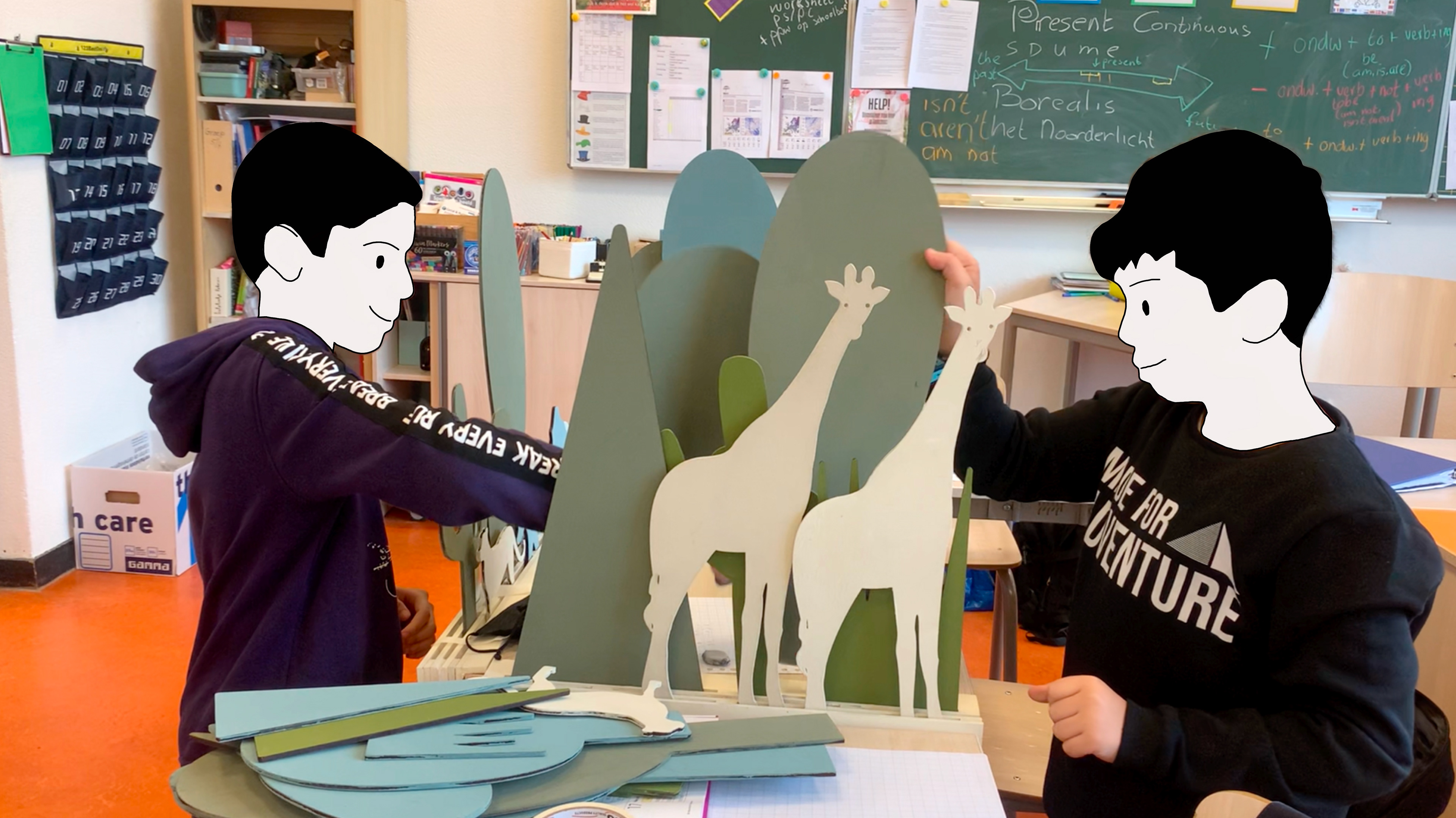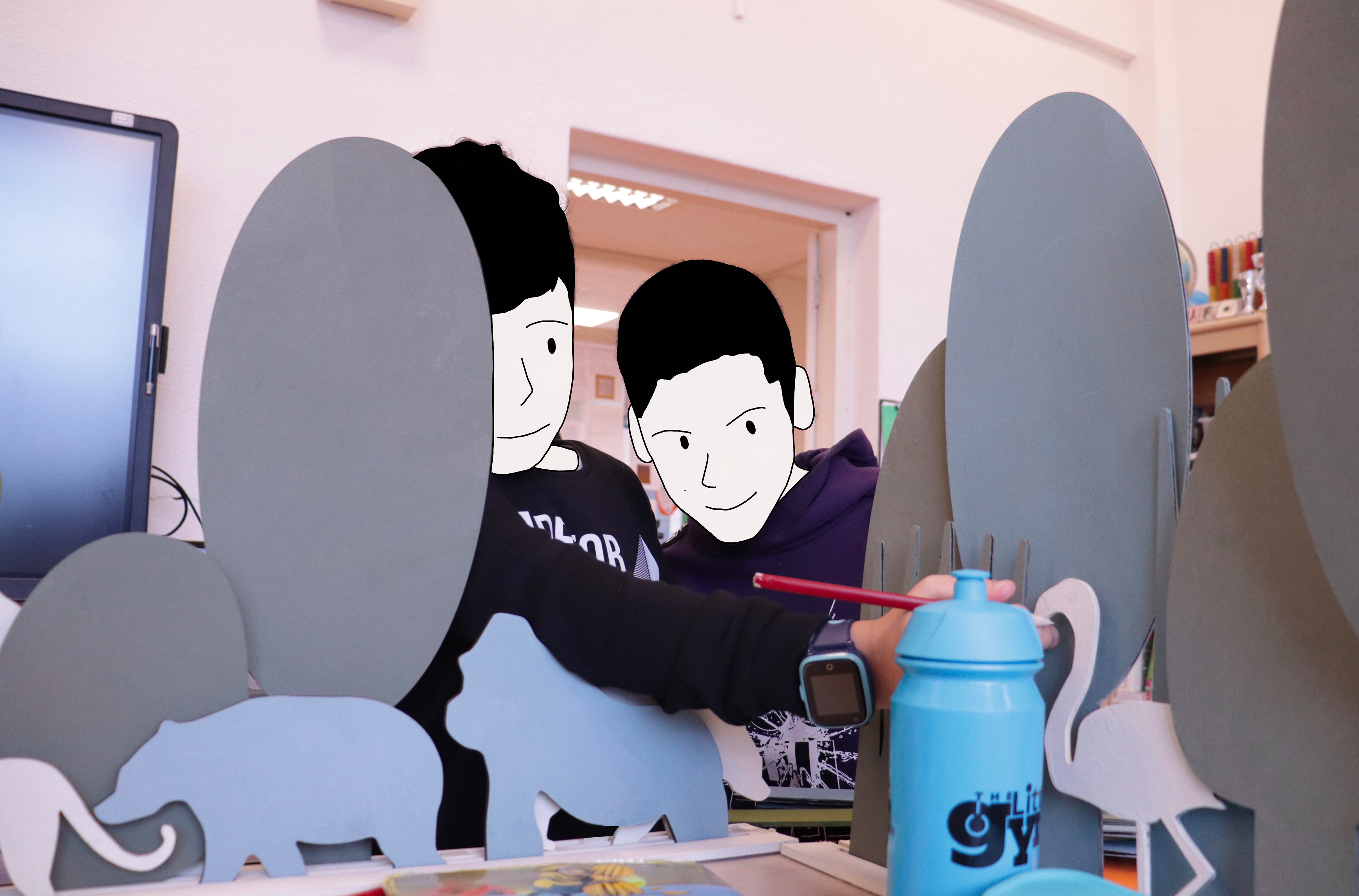Date: September 2021 - January 2022
Project Type: Individual project
Location: Delft, the Netherlands
Project summary
How can we help students focus on their studies while feeling connected with others?
Have you ever caught yourself looking at the wall or a fly when you were supposed to focus on a lecture or work? I bet you have. Many people with ADHD experience this on daily basis with most of the activities. Through an observation research in a classroom of an elementary school in the Netherlands, where two students with ADHD were included, it was noticed that there were some students who have difficulty concentrating on their study had to isolate themselves completely, which created awkwardness and disconnection with other students. This project addresses the obstacle faced in this situation not only for students with ADHD but also for other students. This project has been awarded by European Product Design Award, London International Creative Competition, BIG SEE Award and featured by Yanko Design, Core 77 and Delft Institute of Positive Design.
あなたはこれまで授業や仕事に集中しなくてはいけない場面で、ふと虫や壁に気がいってしまうような経験をしたことはないだろうか?きっとあるだろう。多くのADHD(注意欠如多動症)を持った人々は日常生活でこれを頻繁に経験する。2名のADHDを持つ児童が含まれたオランダの小学校の教室でのリサーチから、勉強に集中するのが苦手な数名の児童は自分自身を他者から完全に隔離しなくてはならず、それによって気まずさや孤立感を感じやすくなっていた。このプロジェクトは、ADHDを持つ児童だけではなく、その他全ての児童のために立ちはだかる課題の解決に取り組んだ。
Research
Being part of the group vs Having a place of concentration
Observation research took place for one week, where students were observed in their classroom during regular class activities. During the observation, it was noticed that students were allowed to walk to other students because they were encouraged to work on assignments together. While they enjoyed this collaboration, it causes distraction for some other students. For this reason, those who are not good at concentrating, isolated themselves from other students to focus. While isolation is the best way for them to study, it might cause separation from those who do not require isolation to focus.
1週間に及ぶ参与観察で私は児童の教室でのアクティビティを記録した。この中で、以下のことが分かった.。1.児童たちは他のクラスメイトの席に行って一緒に問題を解くことが推奨されている。2.彼らはこのコラボレーションを楽しんでいた一方で、何人かの児童はそれによって気が散ってしまっていた。3.結果的に課題に集中できない児童は、自分の机を他から離したり、デスクパーテーションなどを使用するなどして集中しようとしていた。
確かに周囲から「孤立」をすることによって、児童は課題に集中できるようになる。しかし、それによって他のクラスメートとの断絶が生まれる可能性があった。例えば、既存のデスクパーテーションを児童が使うとしよう。彼らは、隣の席に座るクラスメイトとのコミュニケーションを拒絶しているような感覚になってしまうかもしれない。そういったところから少しずつ児童の間で距離が生まれてしまうかもしれない。
Design Goal
Thus, my design goal was to enable students with ADHD to construct their physical bubble that helps them focus, without feeling disconnected from other students.
私は以上の観察結果から、このプロジェクトで達成したいゴールを設定した。それは、ADHDを持つ児童や、集中することが苦手な児童が周囲との繋がりを感じながら、課題にも集中して取り組めるような環境を作ると言うものだ。
Prototyping
Being inspired by students' playful engagement with the prototype
The initial prototyping phase consisted of cards with two different messages, “I want to focus” and “I want to work with you” on the opposite sides. The idea behind this prototype was to enable them to convey their feeling to other students. Their response was positive, but not in the way I expected. The children soon lost interest in the texts on the cards, but they really enjoyed pinning them between the desks. Therefore, I decided to take that pleasure as the starting point for a new design. I made flower and tree-shaped cards and asked students to use them. From this test, what I found was that students enjoyed building up their physical bubble with others students.
私は次のステップとしてプロトタイプを作り児童に実際に使ってもらいながら、問題に対する理解をアップデートしていくことにした。私はカードをまず製作した。このカードには表と裏にそれぞれ、「私は集中したい」と、「私は一緒に課題に取り組みたい」というメッセージが入っており、机や椅子に取り付けることができる。私はこのプロトタイプによって児童が自分の気持ちを他者に伝えやすくなると考えた。彼らからの反応は良かったが私が期待した通りには行かなかった。彼らのメッセージの内容への関心はいつしかなくなっていった。ところが、彼らはそれ以降もこのカードを使い続けていた。どうやらこのカードを「机と机の間に挟む行為」に一種の喜びを感じているようだった。私は児童のこの喜びを起点に彼らが自らの手でデスクパーテーションを楽しく作り上げられるような仕組みが考えられないかと発想した。直感的に、私の頭の中に児童が思い思いに自分の好きなパーテーションを机と机の間に差し込む画が浮かんだ。私は花や木など、遊び心のある形をしたカードを作り、児童に使ってもらった。この実験で児童はパーテーションをクラスメイトと楽しみながら構築しているのが確認できた。つまりは、従来のパーテションでは児童が1人で構築していたパーテーションを他者と共に作り上げており、もはや「孤独」な作業ではなくなっていたのだ。
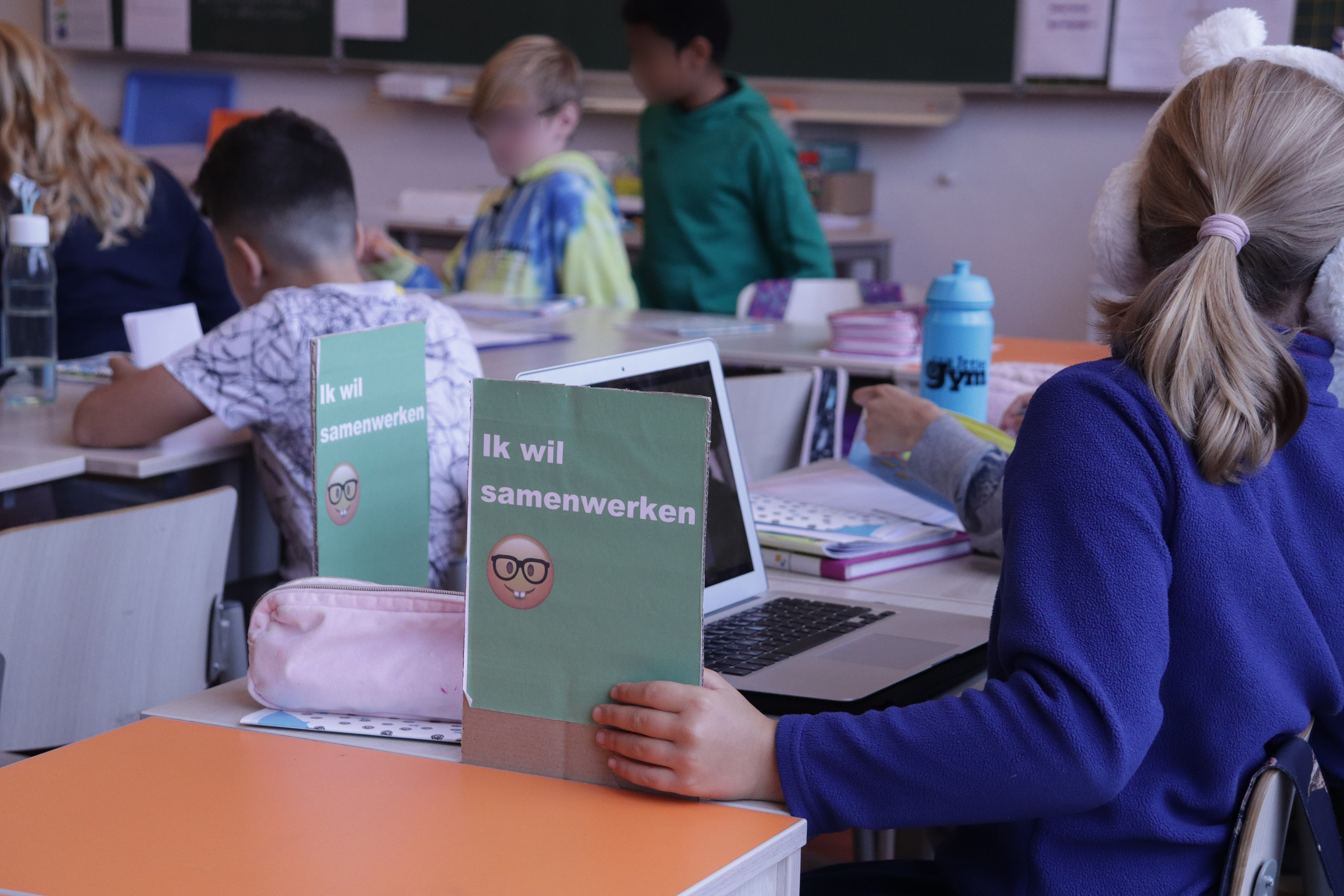
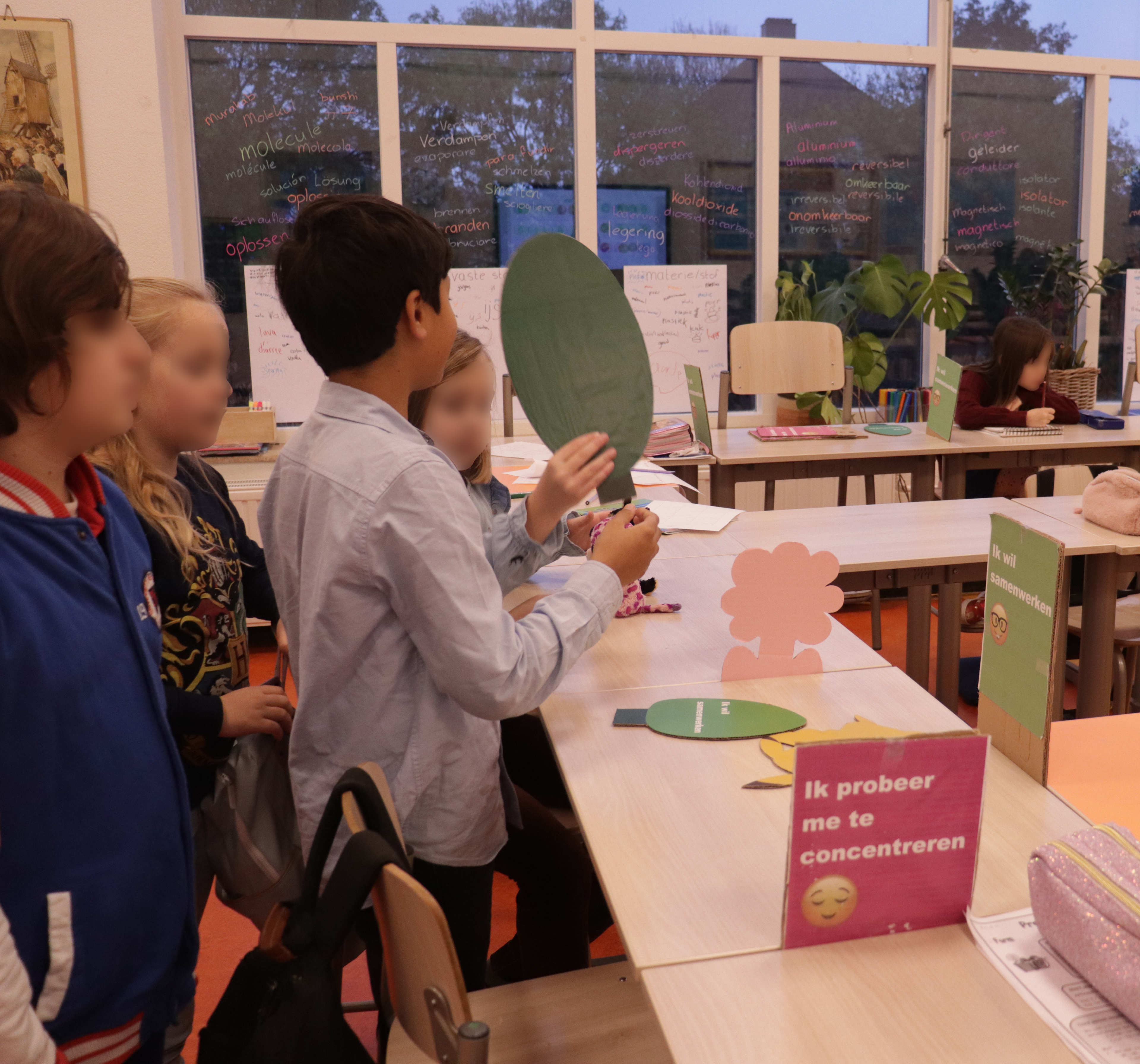
Result
Withdraw into your concentration bubble
The final design is Forest: a set of desk partitions and a slot profile that attaches to the table. With the cut-out shapes of animals, trees and plants, the partition can be arranged by students creating their original scenery. And this playfulness encourages other students to join in the building of a physical bubble which limits the students’ intake of environmental interference. My intention behind this design is to give students autonomy to choose how high and how dense their Forest (partitions) would be.
私はこのリサーチの成果物として、Forestというデスクパーテーションを製作した。Forestは複数枚のパーテーションと、それを差し込むことができるスロット・プロファイルによって構成されている。動物、木、草の形をしたパーテーションによって児童は自分だけのオリジナルな「風景」を作ることができる。そして、この風景が完成すると、キュービクルのように児童の集中をサポートしてくれる。このフレキシブルにアレンジ可能なパーテーションは、森(パーテション)の高さ、そして、密度を自分で調整し、児童がどのくらい外部とのコンタクトを持ちたいか決定することができる。この児童本人に自主性(Autonomy)を持たせるデザインは、彼らにsense of control(物事を自分自身でコントロールできているという感覚)と、feeling of achievement(達成感)を与えてくれる。そして何より、この遊び心のあるデザインは周りにいるクラスメイトに興味を持たせ、パーテーションの構築に参加させる効果がある。
The parts are made of wood and painted with soft colors that are limited to specific shades of yellow, green, and turquoise blue. Those colors are calming the eye and help studnets focus on their studies.
部品は木製で、柔らかな色合いの黄色、緑、ターコイズブルーの限られた色のみで塗装されています。これらの色は目に優しく、児童が学習に集中しやすくなる効果があります。
Compared to existing desk partitions which are overwhelmingly big, Forest consists of small size of playfully shaped partitions. So, when you see a single piece of the partition, you won’t get the impression that it’s something that constructs the bubble, which encourages students to interact with the pieces and build their own bubble while expanding their creativity.
従来のユーザーを圧倒するような大きいパーテーションとは対照的に、Forestは小さく、遊び心のある形をしており、これが最終的に本人の周囲を囲うネガティブな意味での「殻」になるという印象を与えず、創造性を発散させながら楽しく構築することができる。


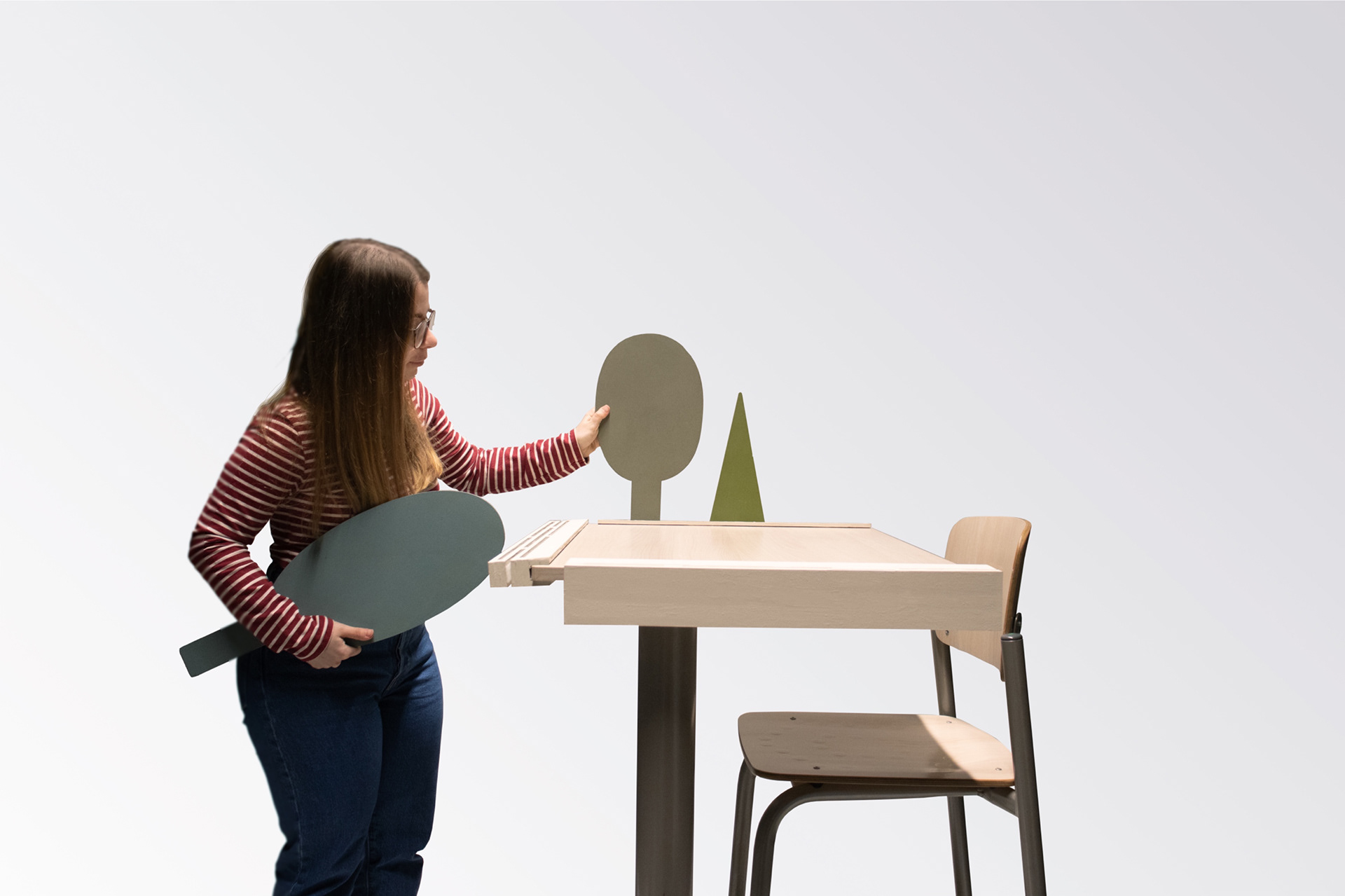
Students enjoyed building up their bubble with other students
In the evaluation test that involved 7 neuro-typical students and 3 student with ADHD, all students found the final design to be useful for focusing on their assignments. Also, it was seen that they constructed the partitions with other classmates. This collaboration made them feel connected with each other.
定型発達の児童7人と、ADHDを持つ児童3人を含めた検証テストでは、全ての参加者が集中しやすくなったと話してくれた。そして、彼らが周囲の児童と共にパーテーションを構築しているところが確認できた。
